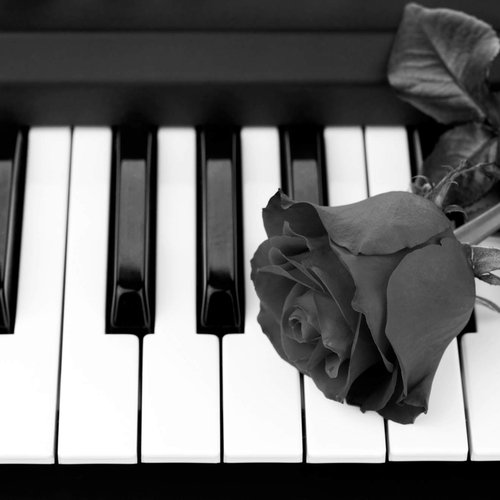8 classical composers who absolutely adored their pets
1 November 2024, 17:32

Mozart owned a starling, Shostakovich loved his dog, and Ravel was smitten with his kittens. We take a look at our favourite composer-pet relationships.
Listen to this article
Life can be lonely for a composer, who may spend hours in solitude waiting for inspiration to strike. Given these circumstances, it is unsurprising that any of the great composers decided to keep a pet companion to provide them with warmth and comfort.
We look at some of the most enduring composer-pet relationships.
Read more: 10 calming pieces of classical music for your pet
-
Ravel and his litter of Siamese kittens
French impressionist composer Maurice Ravel loved cats and was filled with joy when he became the delighted godfather to a new litter of Siamese kittens. He was so smitten with the kittens that he allowed them to invade his worktable and climb over his manuscripts, seeming totally at ease with them all the time.
He loved his cats so much that he even spoke to them in ‘cat language’, playing with them ceaselessly and filling letters to his friends with their details, ending one with a joking cat-like farewell: “I lick the end of your nose.”
Ravel with his kittens. Picture: Alamy -
Mozart’s pet starling
Though a cat or dog is perhaps the most obvious choice for a furry companion, some people like to venture a little off-piste when choosing their pets. The standout unconventional pet-composer relationship comes from Wolfgang Amadeus Mozart. On 27 May 1784, Mozart bought a pet starling bird at a Viennese pet shop and thus blossomed a charming and enduring relationship between the great master and his bird.
Mozart recorded the costs of purchasing the bird in his diary, and he also transcribed a melody purportedly sung by his new bird, now recognised as the finale to Mozart’s Piano Concerto No. 17.
Although now known for being invasive pests, starlings are sociable creatures, as well as clever, cunning and musical, with an ability to learn and repeat tunes. Mozart evidently cared a great deal for his new starling, and when the bird died – just a week after his father’s death – he planned an elaborate ceremony for his dead pet, which included veiled mourners and hymns. Mozart himself recited a poem he wrote, which begins, ‘A little fool lies here, whom I held dear, a starling in the prime of his brief time.’
Mozart and his pet Starling. Picture: Alamy -
Shostakovich and his dog Tomka
Russian 20th-century composer Dmitri Shostakovich lived through one of the most turbulent periods in world history, constantly fearing denunciation by Stalinist authorities. He would often spend sleepless nights on the staircase outside his apartment, thinking he would inevitably be taken away and not wanting to disturb his family.
Given this state of constant anxiety, it seems logical that he would keep a pet to help alleviate the tension. Enter Tomka, a dog Shostakovich adored.
In April 1947, a reporter from the Moscow News visited the Shostakovich home to interview him about his family life. As the interview took place, the sounds of the composer’s wife and children packing bags in the next room could be heard, and a large and unhappy Tomka wandered in, barking and whining.
“Tomka’s upset because the children are going away to the rest home,” Shostakovich remarked, before adding in a more serious tone, “You know, I have a theory that dogs lead such short lives because they take everything so much to heart.”
Isn’t that adorable?
Dimitri Shostakovich, Russian composer (1906-75) photo from 1965. Picture: Alamy -
Elgar and his dogs
Elgar had a quintessentially Victorian love of dogs, even writing the 11th variation in the ‘Enigma’ Variations about his friend’s bulldog, Dan, after it fell into the River Wye.
In addition to this musical dedication to Dan, the bulldog, Elgar, owned a spaniel called Marco before his marriage to Caroline, who hated dogs (surely a red flag?).
When Alice passed away after 30 years of marriage, Elgar (who was devastated by his wife’s death) was finally able to own a dog. Actually, he got three – another spaniel named Marco and two terriers named Meg and Mina.
The dogs were almost always at his side, and when they couldn’t be, Elgar would often keep in contact with them. He even wished them good night via a live radio broadcast when he was forced to be apart from them whilst celebrating his 70th birthday.
Edward Elgar (1857-1934) English composer. Elgar at his desk. Picture: Alamy -
Ethel Smyth and Marco
Dogs and rehearsals rarely mix well, and Ethel Smyth discovered this the hard way. In the late 1880s, she was studying music in Leipzig, where she lived with Marco, her larger-than-life half-breed St Bernard who, in 1887, she took along to a rehearsal of the Brahms Piano Quintet attended by the composer himself.
Everything was going swimmingly until Marco suddenly came bounding into the room and knocked over the cellist’s music stand, and canine chaos ensued.
Thankfully, the great Brahms was also a dog lover and found Marco’s cameo amusing, much to the relief of Smyth.
Ethel Smyth (1858-1944) English composer and suffragette. Picture: Alamy -
Vaughan Williams and Mrs Tim
Vaughan Williams studied with Ravel in Paris, and both men shared a mutual love of cats, with the English composer owning a cat named Mrs Tim.
Fellow composer Gerald Finzi used to be on cat-sitting duty for Vaughan Williams when he was away on tour.
On one such occasion, the cat, Mrs Tim, got into a fight, prompting Vaughan Williams’ wife Adeline to write to Finzi, “We wonder if it was the fluffy black cat with white paws that Mrs Tim was scrapping with. She is a great fighter.”
Ralph Vaughan Williams (1872 - 1958). Picture: Alamy -
Carl Czerny and up to seven cats
How many cats is too many? Most people are happy with one, some like to have two, three may prove to be a crowd. Any more, and we are bordering on full-blown cat mania. For 19th-century composer and pianist Carl Czerny, however, that is far too few.
The Austrian lived with as many as SEVEN cats at a time and was on personal terms with many of the musical celebrities of the era, including his teacher, Beethoven. He counted Schubert, Liszt and many others among his personal friends.
Czerny had never married and led a simple bachelor’s life. “His cats, which he had taught to take their meals from his hand at the ringing of a bell, were the companion of his old age.”
Carl Czerny. Picture: Alamy -
Domenico Scarlatti, Clementi and Pulcinella
Italian composer Giuseppe Scarlatti wrote a staggering 555 keyboard sonatas. Among his numerous works for the keyboard is a composition known as the ‘Cat’s Fugue’.
Legend has it that Scarlatti’s cat was responsible for the awkward-sounding theme of the fugue, with the mischievous pet prone to walking across the composer’s keyboard, sounding random notes as it went. Apparently, Scarlatti wrote down the notes he heard. Whilst it is a sweet story, it is now clear that it was the invention of Muzio Clementi – a true cat lover – who used the title frequently in both publications and concert programs throughout the 19th century. Regardless of the origins, it is certain that the charming nickname has helped Scarlatti’s piece enjoy enduring popularity.
Portrait of Domenico Scarlatti (1685-1757), Italian composer. Picture: Alamy

















































